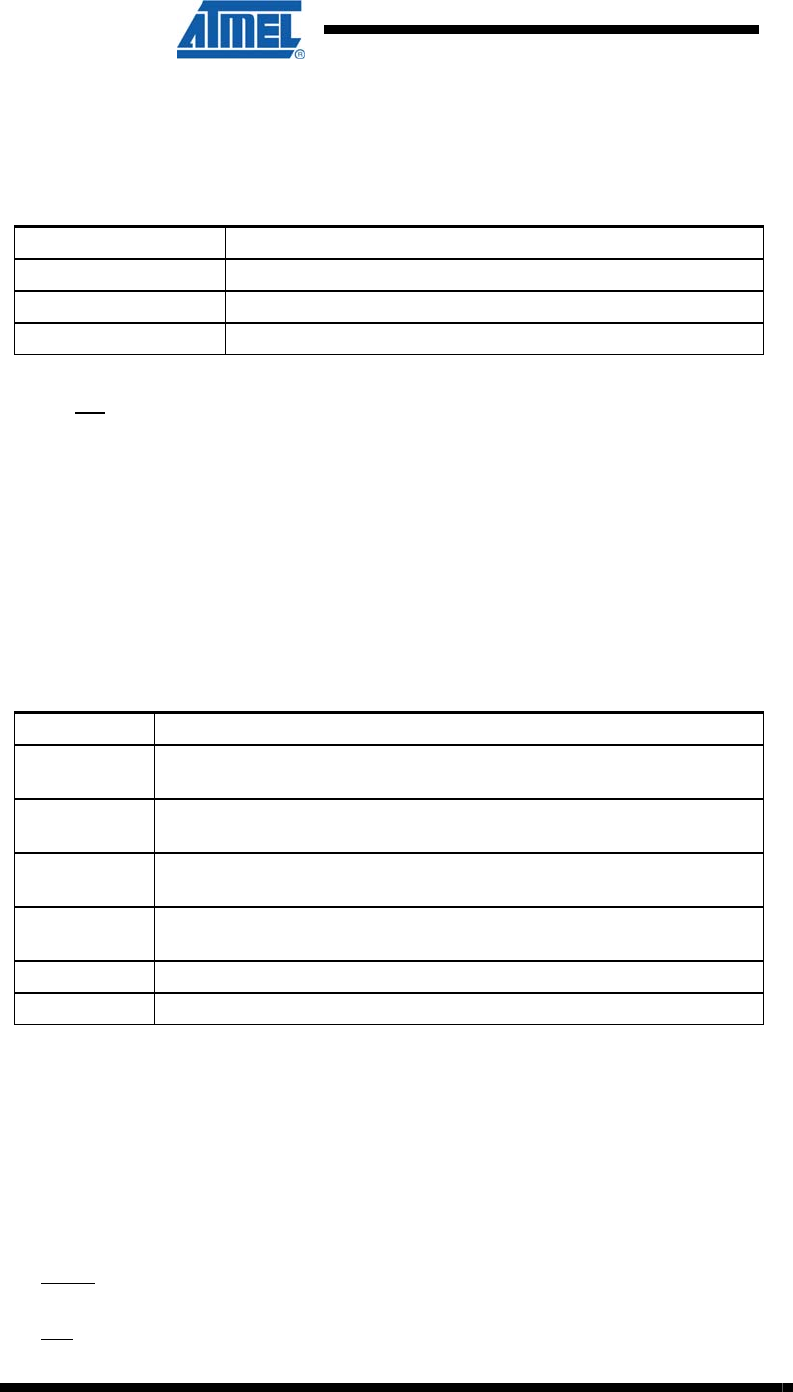
26
AVR2070
8240B-AVR-06/09
The IPSO demo has two parts to it. The first part is an interactive control to allow
polling of the sensor and configuration tasks. The second part is to have the sensor
automatically send data to a central server.
The wireless sensor node listens on three UDP ports, their use is as follows:
Table 6-4-1. UDP Ports
Port Description
61616 The sensor will listen for requests on this port
61617 The sensor will listen for data from other nodes on this port
61618 The sensor will listen for administrative commands on this port
Tip
If both the destination and source ports are in the range 0xF0B0 to
0xF0BF (61616 – 61631), 6LoWPAN can compress the destination and
source ports, saving four bytes of transmitted data.
The acceptable commands on each port are listed in the next sections.
6.4.1 Commands on Port 61616
The no
de will accept the following commands on port 61616, and all commands must
end with either a line-feed, or carriage-return line-feed combination (<LF> or
<CR><LF>).
Table 6-4-2. UDP Commands on Port 61616
Command Description
T
Get the current temperature. Return value will be 'T22.5' for example for a
22.5 C temperature.
H
Get the current humidity. Return value will be 'H13' for example for 13%
humidity.
L
Get the current light reading, from 0-100. Return value would be 'H50' for
example.
A
Get the status of the LED. Either 'A0' to indicate LED is off, or 'A1' to
indicate LED is on.
A1 Turn the LED on. No return value.
A0 Turn the LED off. No return value.
Unknown commands will result in a return value of the byte 0xFF followed by the
unknown command.
As an example connect to the node with netcat6 on port 61616. For these examples
<enter> means to press enter, and anything that is underlined is a response back
from the node.
C:\> nc6 -u 2001:db8:1e1:1:baad:ff:fe00:1 61616 <enter>
T<enter>
T22.5
H<enter>
H50


















